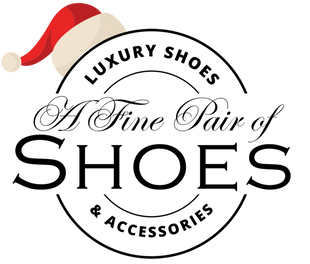STYLES
Oxford
 |
The Classic Oxford dates back over 200 years in history, this formal style is thought to have been named by the students at Oxford University as they rebelled against knee high lace up boots. Oxfords are unique in the way they look and are made. Oxfords are referred to as closed laced shoes as the inside and outside quarters are stitched underneath the vamp of the shoe. The tongue of the shoe is also stitched in separately under the vamp. Oxfords can be referred to by a few different names : Balmoral, Whole Cut, Toe Cap, Full Brogue, Semi Brogue. |
Loafer
 |
Loafers have deep American roots that span from the original moccasin. The loafer is a casual shoe that offers the wearer an easy-on-easy off approach to a Goodyear-welted shoe. Loafers are constructed out of 1 or 2 pieces of leather and are either unlined or lined making them ideal for summer. Loafers can be referred to by a few different names: Penny, Belgian, Tassel, Saddle. |
Derby
 |
The classic Derby dates to 1800 when they were worn as standard issue footwear for soldiers. They bridge the gap between smart and smart casual wear. The Derby is often referred to as an open-laced shoe and suited to a wider foot. The inside and outside quarters are stitched to a tab point on either side of the vamp Derby's can be referred to by a few different names: Split Toe, Apron, Country Brogue, Long Wing, Toe Cap. |
Monk Strap
 |
Monks were originally made by alpine monks in the 15th century and worn throughout European monasteries up until the 1920s. Unbeknown to many, a Monk strap style hosts similar fitting qualities and construction to a Derby. You could think of a Monk style as a ‘modern day’ Derby, of sorts. With open quarters, and a whole cut vamp and tongue, Monk straps (single and double buckle) are remarkably comfortable on the foot. However, they will not offer the same level of adjustment, due to the absence of laces. The sequence of operations for constructing a Monk is similar to a Derby. Inside and outside Quarters are stitched to a tab point on either side of the vamp The tongue is cut as part of the vamp and is not a separate component Suited to higher insteps, but can lack adjustment |
Chelsea Boot
 |
The Chelsea boot dates to the Victorian era, where it was worn by both men and women for walking and riding. The boots were first seen in recent years in the 1960's on the king's road in the London borough of Chelsea, and then adopted the name Chelsea boots. Can be worn both smart and casually. Elasticated sides for a tailored fit. |
Chukka Boot
 |
The Chukka boot often referred to as the desert boot is thought to have been first designed for English soldiers in the western desert campaign in WWII. Chukka boots are often regarded as the most comfortable of all styles, as they are usually made with very soft suede. Low cut boot with 2-3 eyelets for easy on and off. |
Jodhpur Boot
 |
The Jodhpur boot originated in Jodhpur (India) in the 1920s worn by local riders. The style of boot soon spread to the west and has been heavily linked to equine sports ever since. The signature feature of the Jodhpurs is its method of fastening, with both a strap and a buckle wrapped around the ankle, crossing over at the back. Can be worn as a country boot or as a city boot. Easy to adjust the fit of the boot. |















